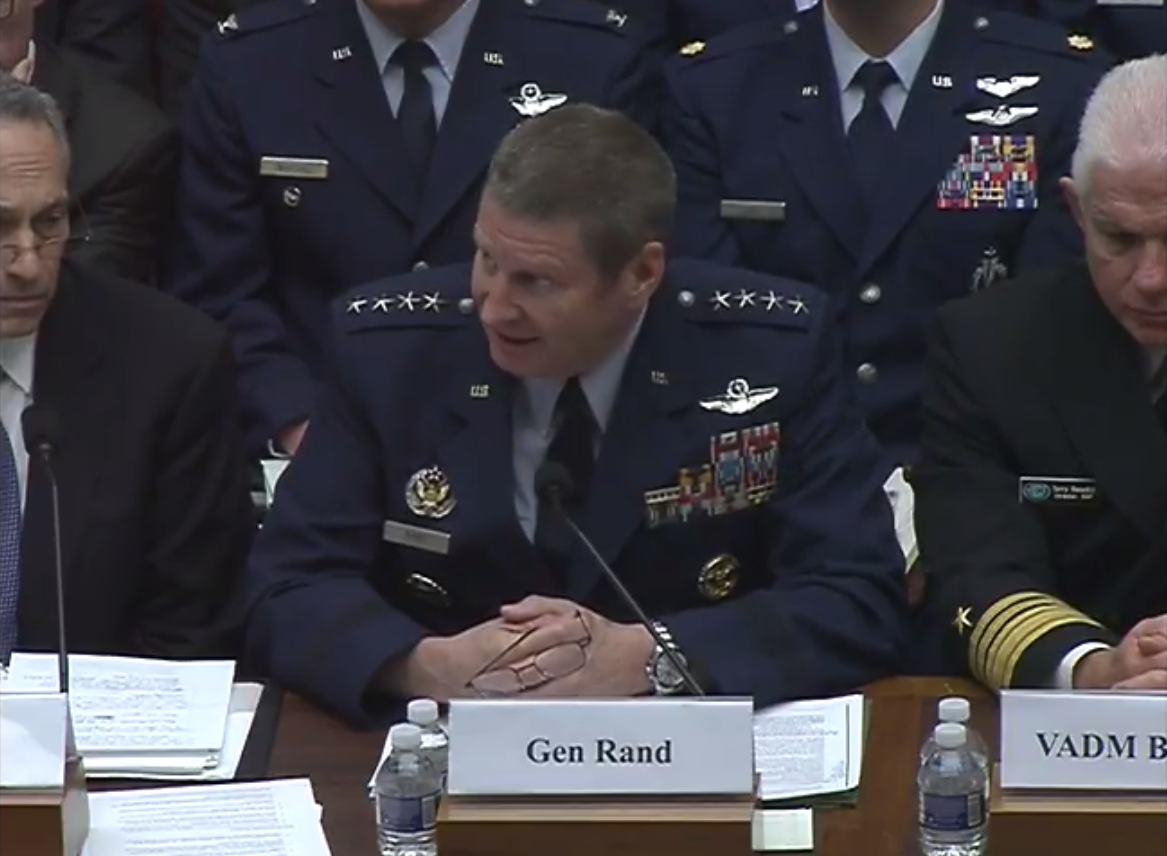
Air Force Global Strike Command boss Gen. Robin Rand testifies before the House Armed Services strategic forces panel on May 25, 2017. Screenshot photo.
Retired USAF Lt. Gen. Frank Klotz, who heads the National Nuclear Security Administration, said the Air Force’s FY18 budget request “reflects” the need to continue to invest in the nuclear area, noting an emphasis in deterrence.
Testifying before the House Armed Services Committee’s strategic forces subcommittee Thursday alongside other nuclear military experts on the subject of the Fiscal 18 budget request, Klotz acknowledged it took “many years” to get into this situation and it will take many years to get out. As such, he predicted, Congress can expect to see similar request for nuclear funding well into the future.
Most of the conversation revolved around the funding for and status of long-time nuclear projects, from developing the B-21 to updating the nuclear command, control, and communication (NC3) capability.
The Air Force will select two companies for development work on the Ground Based Strategic Deterrent program by “this summer,” said Global Strike Command chief Gen. Robin Rand.
Rand said he couldn’t offer more on the subject since he’s “the requirements guy, not the acquisitions guy. We set the requirements and we’ve set them for GBSD.”
The program, which will replace aging Minuteman III ICBMS, has met some roadblocks as recently as March when the Defense Department and USAF disagreed on its cost. A final source for the program should be selected by 2021, Rand said.
The Fiscal 2018 budget requests just under $216 million for the GBSD program, up from the enacted $114 million in FY17.
Asked about the increased funding for the B-21 program—up from FY17’s $1.3 billion to a requested $2 billion—and the uncertainty in its actual unit needs, Rand said simply “any delay in that program would be devastating.”
With many questions focusing on nuclear commonality, the concept of developing technologies and materiel the services can use laterally, both Rand and Vice Adm. Terry Benedict, director of the Navy’s Strategic Systems Programs, said that it’s a nuanced issue. “When you define commonality, the term we’ve used is ‘smart commonality,’” Rand said, referring to test capabilities, repair facilities, and the like. Total commonality, Benedict said, is “unfeasible.”
John Zangardi, the Defense Department’s Chief Information Officer, said the National Leadership Command Capability (NLCC) is heavily focused on reviewing modernization efforts for the NC3 capability.
“We’re not done. We have more work to do,” he said. The NLCC tasked the Air Force to lead the review effort for NC3, he told the subcommittee, specifically to root out “causality” for the issues and problems that the NC3 components—some of them in use since the 1960s—are facing.
“We have stated very clearly in meetings with my leadership that this is the highest priority,” Zangardi said, adding he’s in “lockstep” with US Strategic Command boss Gen. John Hyten on the issue.
In March, testifying before the HASC, Hyten called the NC3 program “robust, resilient, and ancient.”